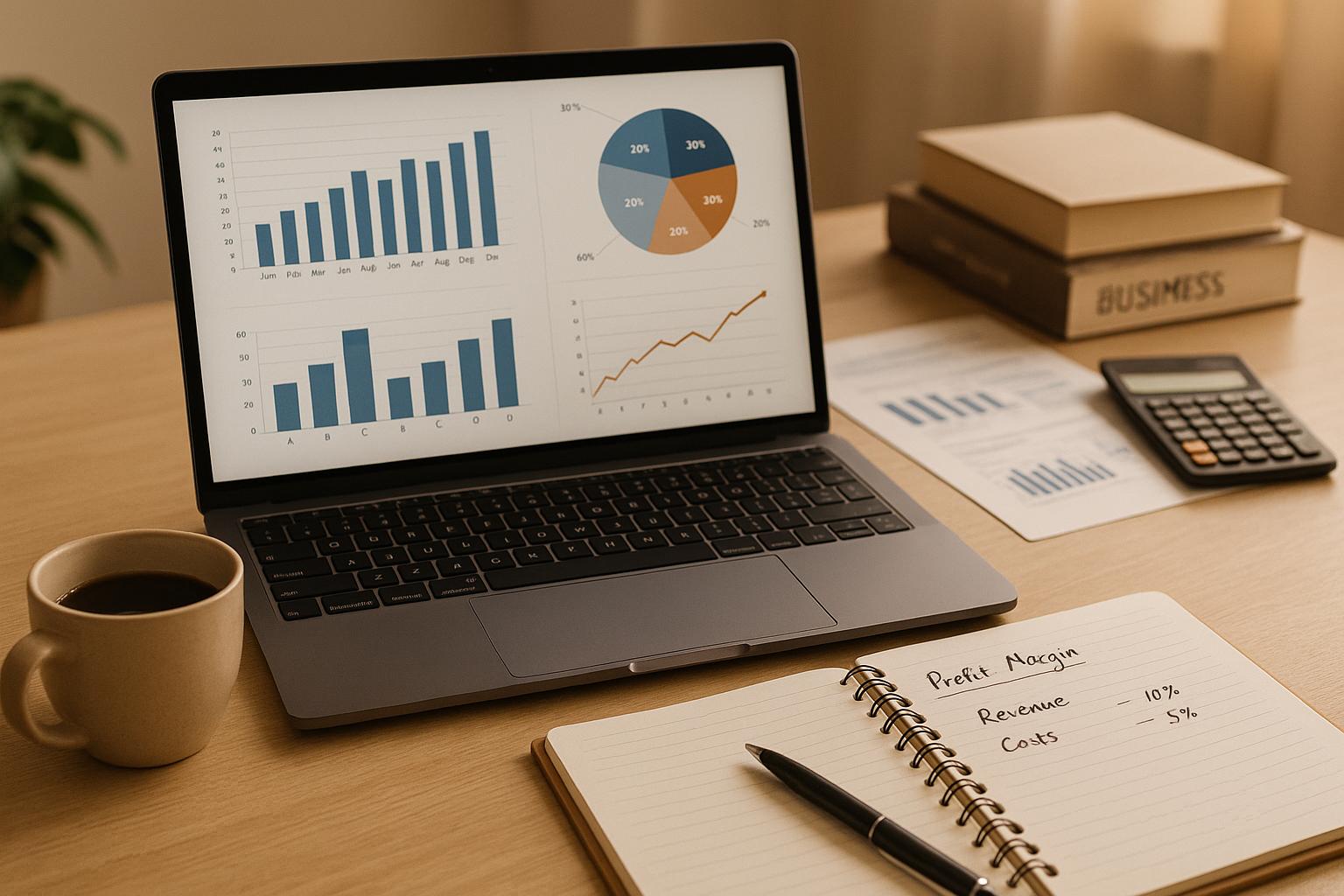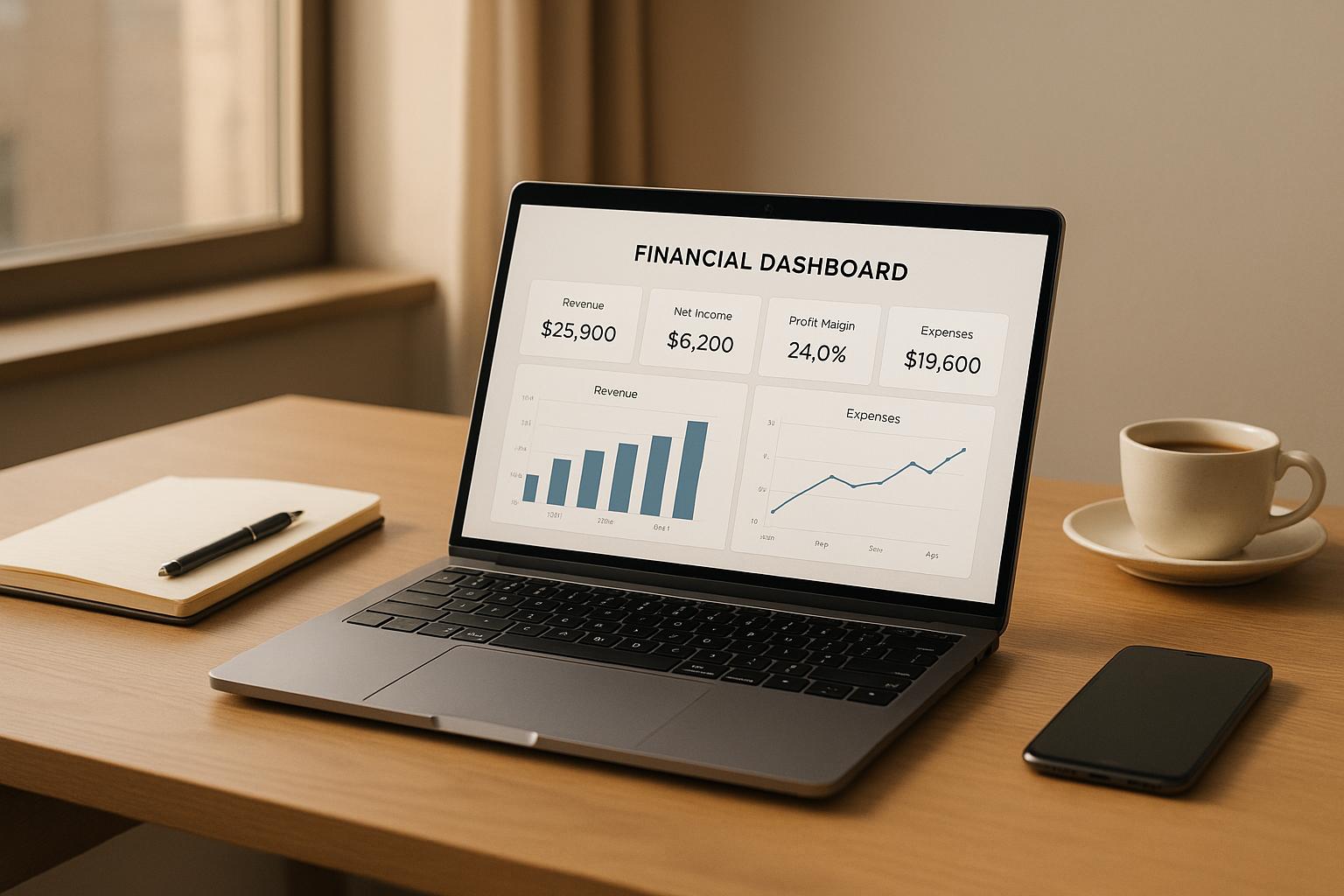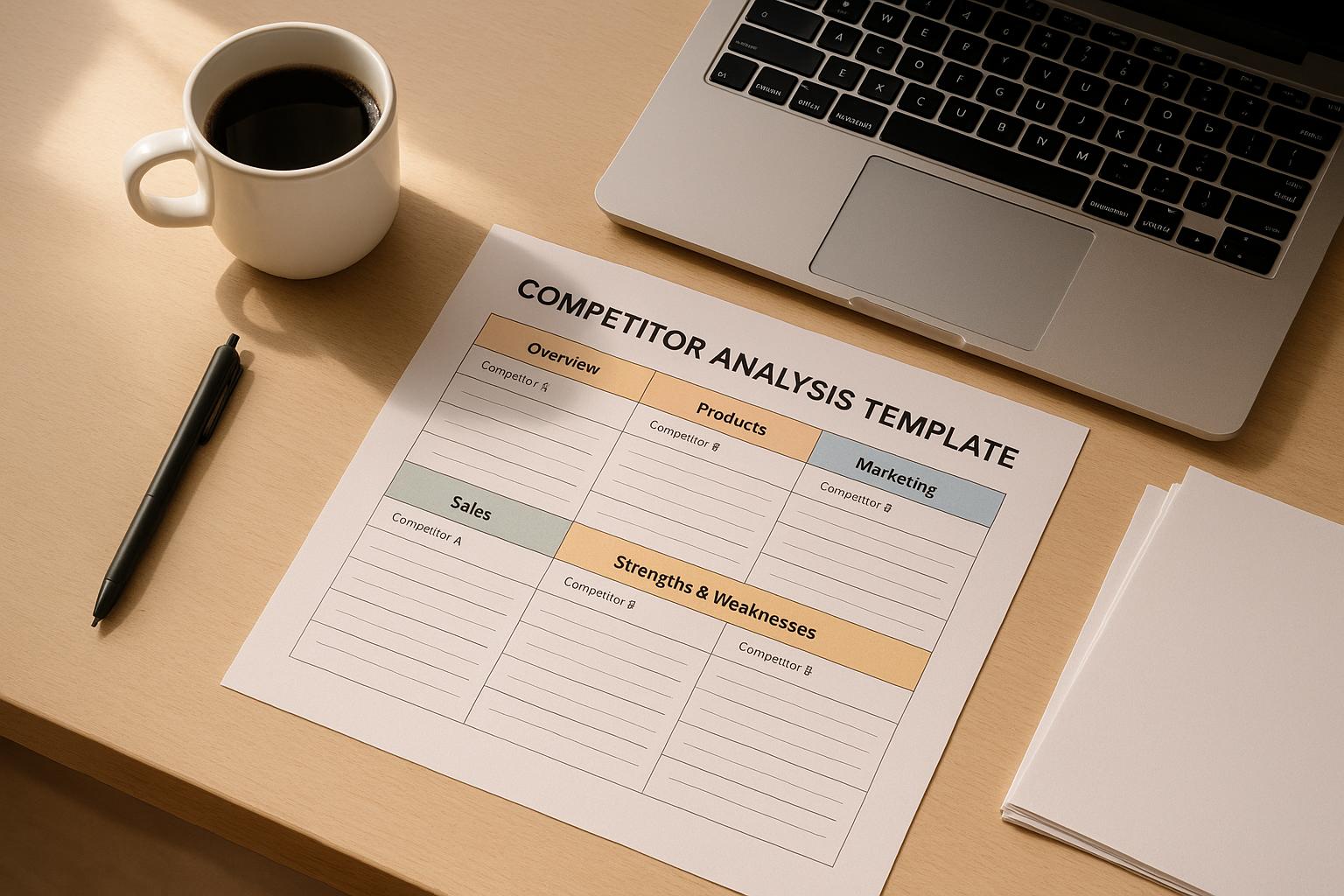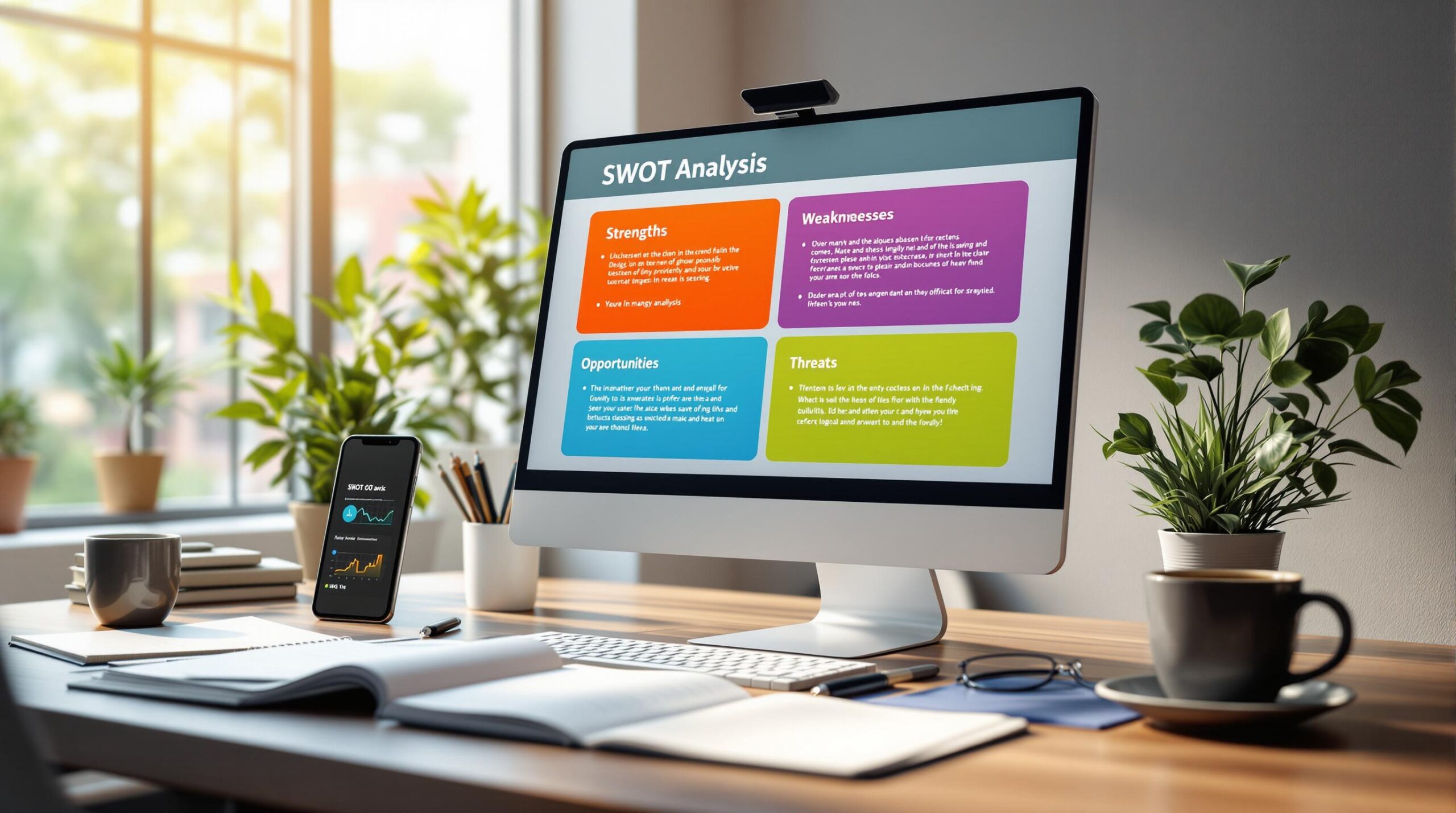
AI has transformed SWOT analysis into a faster, more accurate, and data-driven process. Here's how AI-powered SWOT analysis helps businesses:
- Automated Data Processing: AI collects and analyzes data from multiple sources like customer reviews, market reports, and competitor websites.
- Real-Time Insights: Continuous updates allow businesses to adapt to market changes instantly.
- Pattern Recognition: AI detects trends in customer behavior, competitor strategies, and market opportunities.
- Predictive Analytics: Forecasts competitor moves and industry trends for proactive decision-making.
- Actionable Insights: AI interprets data to provide clear strategies for strengths, weaknesses, opportunities, and threats.
Quick Comparison: Traditional vs. AI-Powered SWOT Analysis
| Aspect | Traditional SWOT | AI-Powered SWOT |
|---|---|---|
| Data Collection | Manual and time-consuming | Automated and comprehensive |
| Pattern Recognition | Limited by human capacity | Advanced algorithms detect trends |
| Time Efficiency | Weeks to complete | Real-time or near-real-time |
AI tools like IdeaFloat, Klue, and Similarweb streamline SWOT analysis, making it accessible for businesses of all sizes. By combining AI insights with human expertise, companies can stay competitive and refine their strategies effectively.
How AI Fits into Competitor SWOT Analysis
What is AI-Driven SWOT Analysis?
AI-driven SWOT analysis uses machine learning and language processing to analyze large datasets and provide actionable insights. Unlike traditional methods, these systems work continuously, updating insights in real time as market conditions shift. This approach offers a faster and more dynamic way for businesses to assess strengths, weaknesses, opportunities, and threats.
Benefits of Using AI for SWOT Analysis
AI-powered SWOT analysis brings several advantages to the table:
- Predictive analytics to anticipate market trends
- Real-time updates for continuous monitoring
- Pattern recognition across diverse data sources
- Automated insights without manual effort
- Integration of data from multiple platforms
As ClearPoint Strategy puts it:
"AI takes the guesswork out of SWOT and helps you make more informed strategic decisions" [3].
How AI Detects Patterns and Trends
AI's ability to spot patterns and trends enhances competitive analysis in several ways:
Customer Insights:
- Analyzing sentiment from reviews
- Tracking brand perception
- Identifying consumer behavior trends
Competitor Tracking:
- Monitoring patent filings and R&D activities
- Analyzing shifts in market share
- Evaluating pricing strategies
- Mapping product development paths
Market Intelligence:
- Forecasting industry trends
- Spotting emerging opportunities
- Assessing competitive advantages
Tools like Google Gemini Pro and Claude by Anthropic showcase how AI transforms raw data into actionable insights [1]. By constantly analyzing data, these tools help businesses uncover opportunities and threats that might go unnoticed with traditional methods.
For example, AI can analyze competitor patent filings alongside market trends to predict upcoming product launches or strategic changes. This gives businesses a head start in adjusting their strategies to stay competitive. The ability to merge data streams and identify subtle patterns sets AI apart, making it a game-changer for SWOT analysis.
Competitive Analysis using ChatGPT
Steps to Conducting AI-Powered SWOT Analysis
Using AI for SWOT analysis involves a step-by-step process to gather, organize, and interpret competitor data effectively. Here's how to get started:
Step 1: Gathering Data from Multiple Sources
The first step is collecting data from a variety of channels. AI tools can pull information from:
- Customer Reviews: Analyzing sentiment and feedback trends.
- Market Reports: Identifying industry trends and market share insights.
- Social Media: Tracking brand mentions and engagement levels.
- Competitor Websites: Monitoring pricing, product features, and positioning.
- Industry Databases: Reviewing patents and R&D developments.
This automated approach is much faster and more thorough than manual methods, offering a detailed view of your competitive environment.
Step 2: Structuring and Categorizing Data
Once the data is collected, AI tools can organize it into the four SWOT categories, making the analysis more efficient:
| SWOT Category | AI Tasks |
|---|---|
| Strengths | Highlighting positive trends in competitor performance. |
| Weaknesses | Detecting gaps in market reach or offerings. |
| Opportunities | Identifying emerging market needs and trends. |
| Threats | Tracking competitor strategies and industry risks. |
This automation saves time and ensures accuracy by turning raw data into structured insights.
Step 3: Generating Actionable Insights
AI doesn't just process data - it interprets it. By identifying patterns and trends, AI platforms can provide:
- Key Insights: Highlighting recurring themes and forecasting market shifts.
- Strategic Recommendations: Offering data-driven suggestions for business actions.
For the best results, combine AI-generated insights with human expertise and update your analysis regularly [2].
sbb-itb-08dd11e
Best Tools for AI-Powered SWOT and Competitor Analysis
The right tools can make all the difference when using AI for SWOT and competitor analysis. Here are some of the top platforms available today.
IdeaFloat: Built for Entrepreneurs
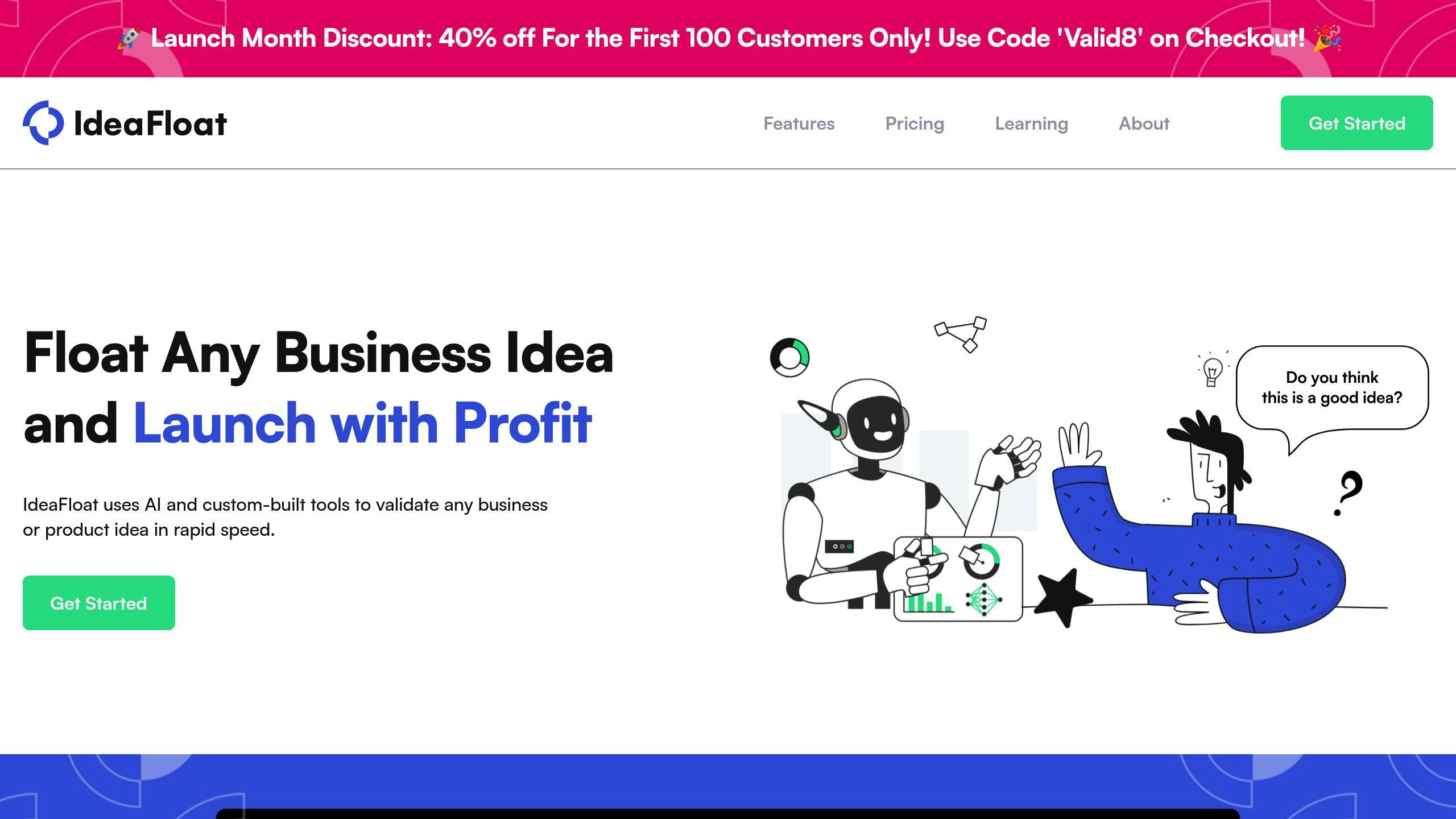
IdeaFloat is an all-in-one AI-powered platform designed for entrepreneurs. It combines business validation with detailed SWOT and competitor analysis, offering a versatile solution. Key features include:
| Feature | What It Does |
|---|---|
| Market Size Assessment | Estimates the total potential market value |
| Customer Profiling | Provides insights into your target audience |
| Competitor Analysis | Creates a detailed view of the competitive landscape |
Other Leading Competitor Analysis Tools
If you're looking for more options, these platforms are also worth exploring:
- Klue: Known for real-time competitor tracking.
- Similarweb: Offers insights tailored to digital strategy.
- Crayon: Focuses on market intelligence through trend analysis.
AI tools can cut analysis time by 70% and boost decision-making accuracy by 90%. Platforms like Google Gemini Pro, Claude by Anthropic, and ChatGPT are particularly effective at processing large datasets, identifying patterns, and delivering actionable insights [1].
When selecting an AI-powered SWOT tool, think about your specific needs, how well the platform handles data, and how easily it integrates with your current workflow [3]. These tools streamline data analysis, enabling businesses to make quicker, more informed strategic choices.
As these technologies advance, they promise even more exciting possibilities for AI in SWOT analysis - a topic we’ll dive into next.
Future Trends in AI for SWOT Analysis
AI is reshaping how businesses approach SWOT analysis by enhancing predictions, creating tools tailored to specific industries, and integrating seamlessly into daily operations.
Predicting Competitor Moves with AI
AI combines historical data with real-time insights to forecast competitor strategies. By analyzing patterns, market signals, consumer behavior, and industry developments, it can provide businesses with a clearer picture of potential moves. As AI tools become increasingly refined, their use is spreading across a wide range of industries.
Industry-Specific AI Tools
AI tools designed for specific industries are revolutionizing SWOT analysis. For instance, retail businesses benefit from tools that analyze pricing trends in real time, while healthcare organizations use AI to monitor R&D developments. These tools not only address unique challenges but also change how businesses incorporate SWOT analysis into their decision-making processes.
Integrating AI into Business Workflows
Embedding AI into everyday operations has transformed competitive analysis. Here’s how it’s making an impact:
- Automated Data Processing: AI streamlines the collection and analysis of competitive intelligence, freeing up time for strategic planning.
- Real-Time Decision Support: Continuous monitoring and instant alerts about competitor activities allow businesses to react quickly to market shifts, staying ahead of the competition.
- Improved Accuracy: AI systems can detect subtle patterns and connections that might go unnoticed by human analysts, resulting in deeper and more reliable SWOT analysis.
AI's role in SWOT analysis is evolving rapidly. These tools are becoming indispensable for businesses aiming to stay competitive in fast-changing markets, offering predictive insights and specialized solutions [1][4].
Conclusion: Using AI to Improve SWOT Analysis
AI has made competitor SWOT analysis more precise and data-focused. By leveraging the processes discussed earlier, AI tools allow businesses to analyze large volumes of competitive data in real-time, revealing insights that would be hard to identify manually.
These tools reduce bias, offer up-to-date information, and forecast potential risks, enabling better decision-making. This approach ensures companies stay competitive by continuously monitoring their environment and refining strategies based on accurate data.
Platforms like IdeaFloat provide AI-driven SWOT analysis tools that help organizations assess their standing and create actionable plans. The future of AI in SWOT analysis will likely involve delivering industry-specific insights through easy-to-use platforms.
To get the most out of AI-powered SWOT analysis, businesses should set clear goals, combine AI findings with human judgment, and regularly update their strategies using tools designed for their specific industries.
Embracing AI tools now can help businesses stay ahead in an ever-changing competitive landscape.
Related Blog Posts
Get the newest tips and tricks of starting your business!
